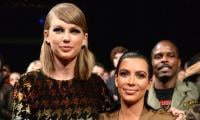In order to cater to gender equality in the media houses, Unesco and Uks, an NGO, organised a national consultation, titled, “Gender-sensitive guidelines for women in the media in South Asia”, at a hotel on Saturday.
The consultation was to refine and validate the guidelines for women in the media at a conference held in May 2016.
The gathering broke into groups and discussed six main issues: the importance of gender balance in Asia (decision-making level and working conditions); the role of associations, clubs and unions in promoting gender parity; gender sensitisation in education and training; addressing gender-based violence, safety and harassment at workplace; portrayal of women in news and current affairs; and portrayal of women in entertainment and advertising.
After deliberations, Group I — focusing on gender balance, decision-making and working conditions—suggested that it was important for the media to formulate a code of ethics as regards female employees. It further suggested that organisations like the APNS and the CPNE take the lead in this regard.
It stressed that it was most important to bridge the gender gap, especially at the senior editorial level. It was important to set goals in this regard, it said.
Group II, focusing on the role of unions, clubs and associations, said the role of unions and associations in bringing about a gender balance was highly important. It was such associations and non-official bodies, it said, that would bring about greater emancipation of women.
The representative of the Karachi Union of Journalists (KUJ), who was presenting the report, said, “We are totally unbiased and as far as we are concerned, gender just does not figure.”
Group III deliberated on gender sensitization in education and training. A woman, who teaches at the Mass Media Department of the University of Karachi, said that beginning with the education at the primary level, the textbooks were male-heavy.
She said, “The man is portrayed as the one who supports the family and the latter would not have been there without him while the woman is just portrayed as a cook or a housekeeper.”
Gender sensitisation, she said, has to start at a very early age. This kind of matter, she said, should be deleted from the primers and the beginners’ curriculum.
Group IV, which was assigned the topic of gender-based violence and managements, said organisations should go out of their way and make earnest efforts to eliminate gender-based violence. In this case, it said, crime stories should be written in the most circumspect of manner.
The leader of Group V, which focused on the portrayal of women in news and current affairs, suggested: “When it comes to commentaries and talks, the overwhelming preference is given to the male experts. There should be an even division between men and women in such programmes.”
Group VI discussed the portrayal of women in media and entertainment. This group said that the even if a script is showing a value of society, it should do so in a more desirable manner so as not to deride the women.
At the end, Tasneem Ahmer, Director, Uks, said: ”Although women are making strides in the right direction, the often-negative portrayal of women in the media lends strength to the misogynist mindset, trying to push women to the wall. There have to be guidelines for the media so that these negatively oriented elements may be kept in check and corrected.”
The image shows a tobacco company worker holding cigarettes. — AFP/FileHYDERABAD: An illegal cigarette factory...
This image shows the dead body. — AFP/FileAn incident unfolded in Quaidabad on Tuesday, resulting in one fatality...
Edhi Marine Services team is busy in a rescue operation in Karachi on March 17, 2024. — PPI An e-taxi driver...
Shah Abdul Latif University Khairpur building can be seen in this image. — Facebook/Shah Abdul Latif University,...
Representational image of a handcuffed man. — Pexels/FileHYDERABAD: A police operation was carried out in Hyderabad,...
A representational image showing a person handcuffed and standing behind bars. — AFP/FileThe SSGC has continued...







